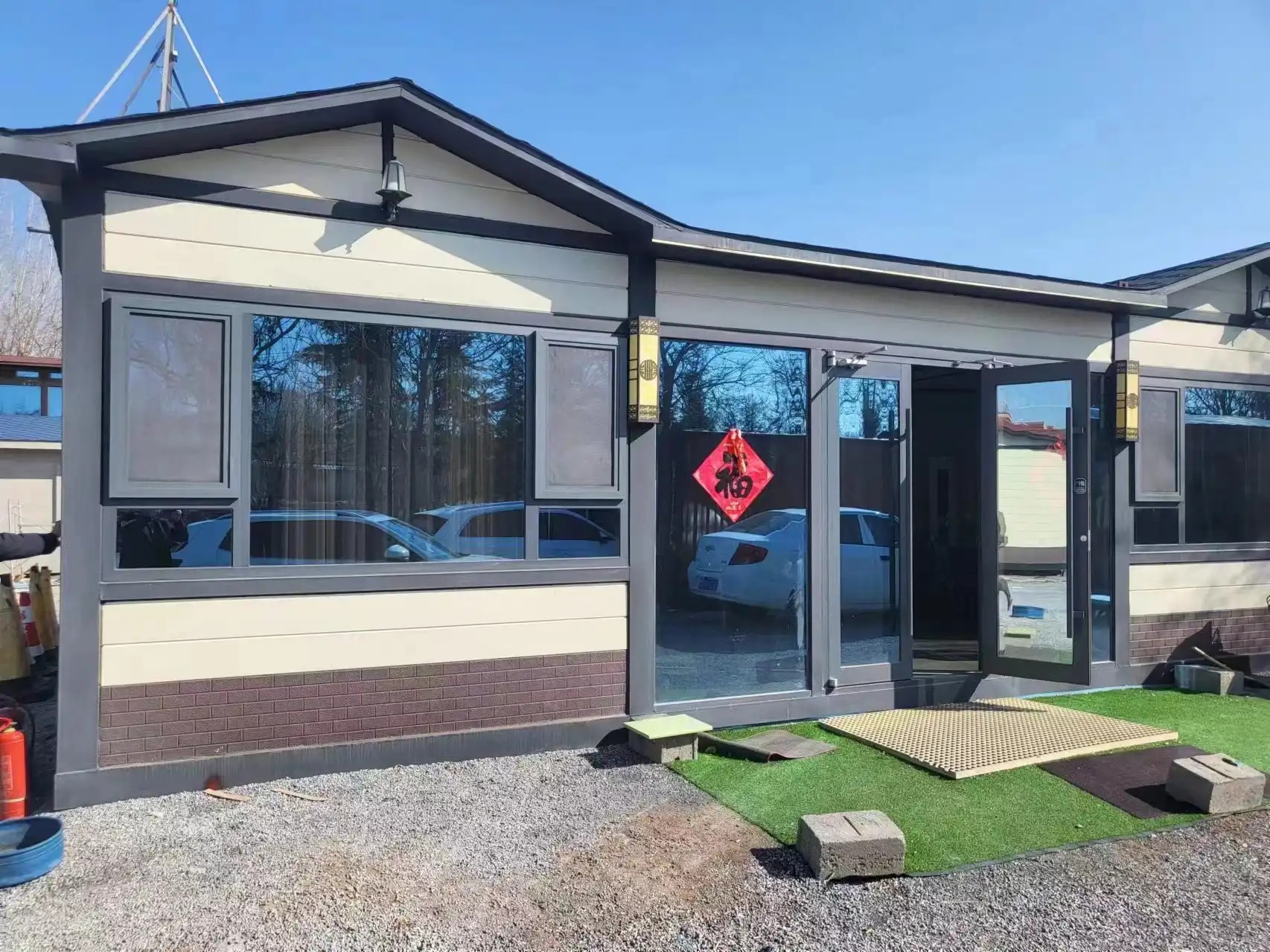Innovative Patterns and Textures: Elevating Facade Aesthetics
Aluminum metal siding panels offer a foil for creativity, allowing contrivers to push the boundaries of conventional surface aesthetics. The plasticity of aluminum enables the creation of intricate patterns and textures that can transfigure a structure's facade into a work of art. Then there are some innovative design ideas that work the versatility of aluminum siding:
Geometric Precision
Architects are increasingly using aluminum metal sidingpanels to create striking geometric patterns on building exteriors. By combining panels of different sizes and orientations, it's possible to craft mesmerizing designs that play with light and shadow. For instance, a facade featuring a mix of horizontal and vertical panels in varying widths can create a dynamic, three-dimensional effect that changes throughout the day as the sun moves across the sky.
Textured Surfaces
Advancements in manufacturing techniques have made it possible to emboss aluminum panels with a wide range of textures. From subtle wood grain patterns to bold, abstract designs, textured aluminum siding can add depth and character to any building. These panels not only enhance visual appeal but also provide an additional layer of interest when touched, creating a multi-sensory experience for those interacting with the building.
Perforated Panels
Perforated aluminum panels are gaining popularity for their ability to create visually stunning facades while also serving functional purposes. These panels can be designed with custom perforation patterns, allowing for controlled light filtration and ventilation. When used creatively, perforated panels can create captivating shadow play on interior surfaces or act as a semi-transparent screen, offering privacy without sacrificing natural light.
Color Palettes and Finishes: Making a Bold Statement
The versatility of aluminum metal siding panels extends to their finishes, offering a spectrum of colors and textures that can dramatically alter a building's appearance. By thoughtfully selecting color palettes and finishes, designers can create facades that harmonize with their surroundings or stand out as bold architectural statements.
Monochromatic Elegance
A monochromatic color scheme using aluminum panels can create a sophisticated and timeless look. By utilizing different shades and textures of a single color, designers can add depth and interest to a facade without overwhelming the senses. For example, a building clad in various tones of gray aluminum panels, ranging from light silver to deep charcoal, can exude a sense of understated elegance and modernity.
Bold Color Contrasts
For those looking to make a statement, aluminum siding panels offer the perfect medium for bold color choices. Contrasting colors can be used to highlight architectural features or create visual interest on large, flat surfaces. Imagine a sleek office building with a predominantly white facade accented by vibrant red aluminum panels around windows and entryways, creating a striking and memorable visual impact.
Metallic and Anodized Finishes
Metallic and anodized finishes can add a touch of luxury and sophistication to any building. These finishes not only enhance the natural beauty of aluminum but also provide additional protection against corrosion and wear. A facade featuring panels with a champagne gold anodized finish, for instance, can lend a sense of opulence to a high-end residential complex or boutique hotel.
Sustainable and Functional Design: Beyond Aesthetics
While the aesthetic potential of aluminum metal siding panels is vast, their functional benefits are equally impressive. Innovative designers are finding ways to integrate these panels into sustainable and energy-efficient building designs, showcasing how beauty and functionality can go hand in hand.
Solar Integration
The latest advancements in solar technology have made it possible to integrate photovoltaic cells directly into aluminum siding panels. This innovative approach allows buildings to generate clean energy while maintaining a sleek, modern appearance. Imagine a commercial building with a south-facing facade clad in aluminum panels that double as solar collectors, seamlessly blending form and function.
Living Walls
Aluminum panels can serve as the perfect backdrop for vertical gardens or living walls. By incorporating a modular system of planters into the siding design, buildings can contribute to urban greening initiatives while creating visually stunning facades. This approach not only enhances the building's aesthetic appeal but also improves air quality and provides natural insulation.
Smart Facade Systems
The future of aluminum siding lies in smart facade systems that can adapt to changing environmental conditions. These systems use sensors and motorized components to adjust panel orientation or opacity, optimizing natural light, ventilation, and temperature control. A building equipped with such a system could feature aluminum panels that automatically tilt to provide shade during hot summer days or open slightly to allow for natural ventilation, showcasing the perfect marriage of design and technology.
Conclusion
Aluminum metal siding panels offer a world of possibilities for creative and functional building design. From innovative patterns and textures to sustainable and smart facade systems, these versatile panels are redefining architectural aesthetics and performance. As technology continues to advance, we can expect even more exciting applications for aluminum siding in the future of building design.
If you're inspired to explore the potential of aluminum metal siding panels for your next project, we invite you to reach out to our team of experts. Contact us at info@sdqsc.com to discover how our premium aluminum siding solutions can elevate your design vision and meet your project's specific needs.